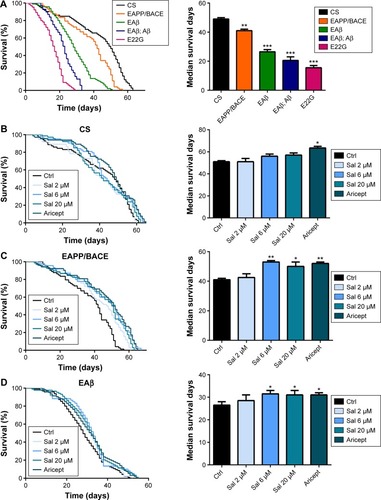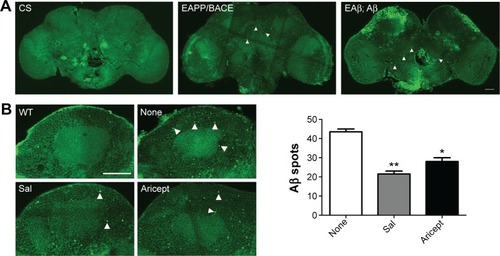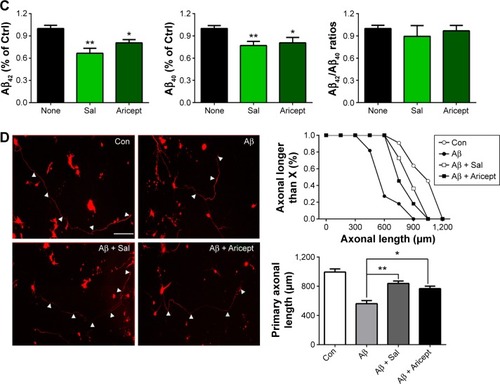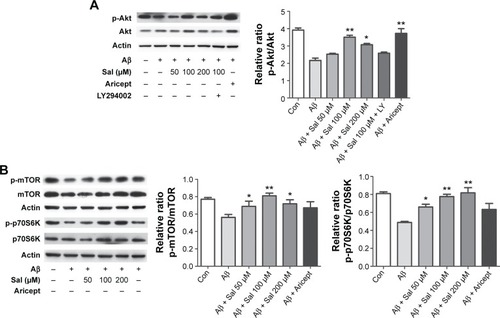Figures & data
Figure 1 Sal treatment increases the life span of a transgenic AD Drosophila model.
Abbreviations: APP, amyloid precursor protein; BACE, beta-secretase; CS, Canton-S; Ctrl, control; Sal, salidroside; AD, Alzheimer’s disease; SEM, standard error of the mean.

Figure 2 Salidroside increases locomotor activity.
Abbreviations: APP, amyloid precursor protein; BACE, beta-secretase; CS, Canton-S; ANOVA, analysis of variance; Ctrl, control; Sal, salidroside; Aβ, amyloid-β; SEM, standard error of the mean.

Figure 3 Effect of Sal on Aβ accumulation in vivo and Aβ induced neurotoxicity in vitro.
Abbreviations: APP, amyloid precursor protein; BACE, beta-secretase; ELISA, enzyme-linked immunosorbent assay; h, hours; ANOVA, analysis of variance; CS, Canton-S; WT, wild type; Sal, salidroside; Ctrl, control; Aβ, amyloid-β; SEM, standard error of the mean; Con, normal control.


Figure 4 Sal inhibits Aβ-induced neurotoxicity by activating the Akt/mTOR/p70S6K pathway in primary cultured cortical neurons.
Abbreviations: Sal, salidroside; mTOR, mammalian target of rapamycin; p70S6K, ribosomal protein S6 kinase; APP, amyloid precursor protein; ANOVA, analysis of variance; Aβ, amyloid-β; SEM, standard error of the mean; Con, normal control.

